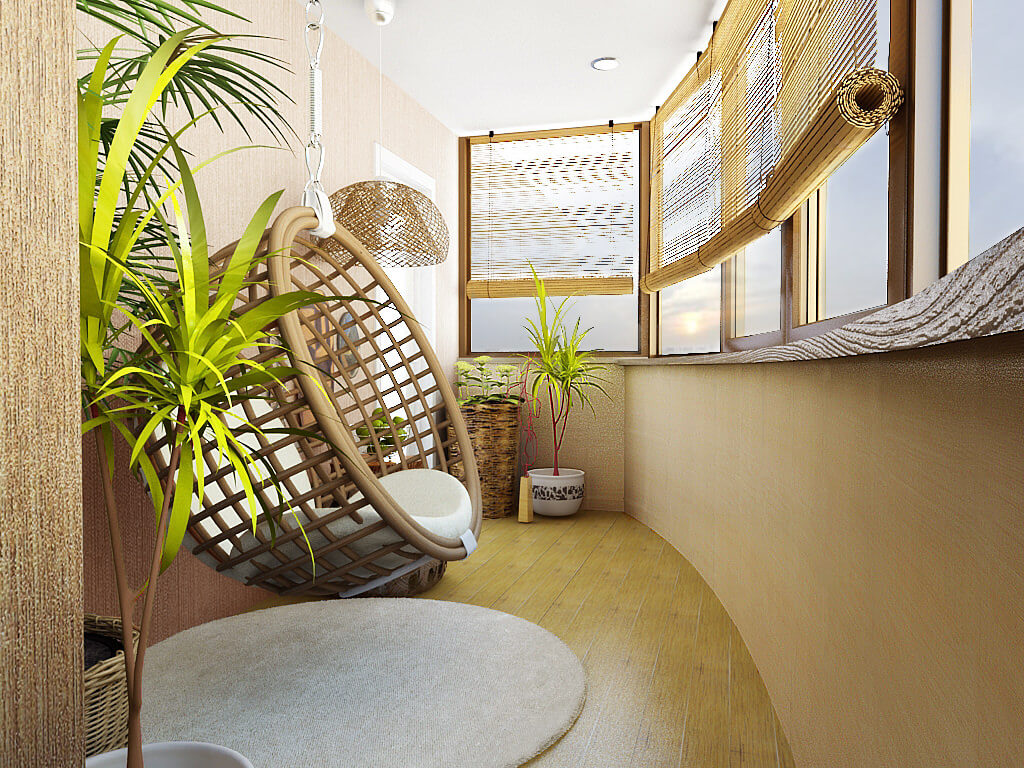Probably, there is no such person who would not want his house to be comfortable and cozy. But do not forget about the attractiveness of the house. Today in prestigious magazines and thematic sites you can find modern styles in interior design.
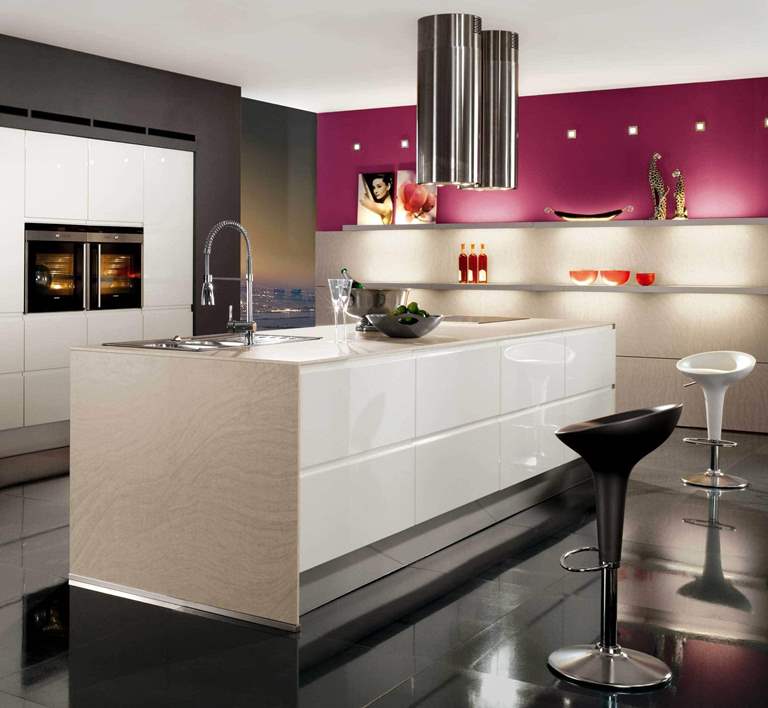
Numerous photos confirm that it is easy to beautify the house and make it attractive. The main thing is to soberly assess their capabilities and make efforts. This applies not only to creative ideas, but also to the state of the family budget. If there are no limitations in the material plan, then it makes it possible to use the services of professionals. They will do everything to make your monastery look prestigious.
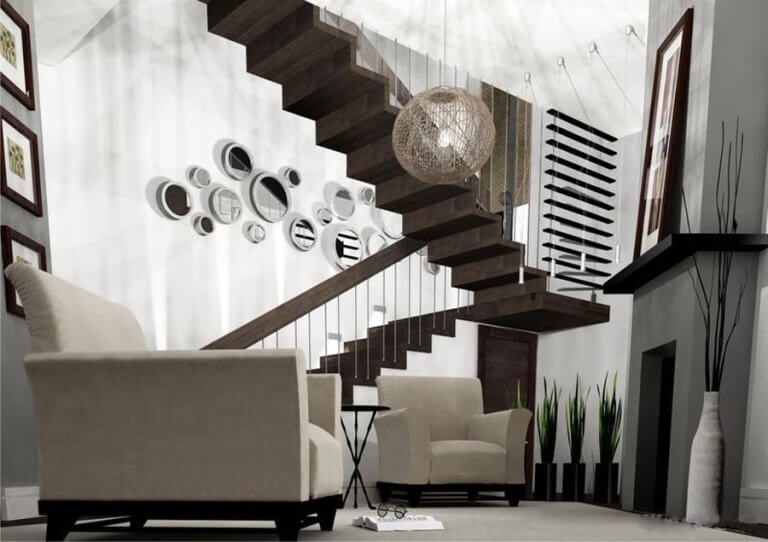
Constructivism
If we talk about the modern design of the house, then it is worth paying attention to constructivism. The peculiarity of this style is the presence of broken lines, high functionality of interior elements, as well as scanty decor.
There is no place for accessories that do not have a practical purpose. Rationality is the main thing, what guides professionals in the design of the premises.
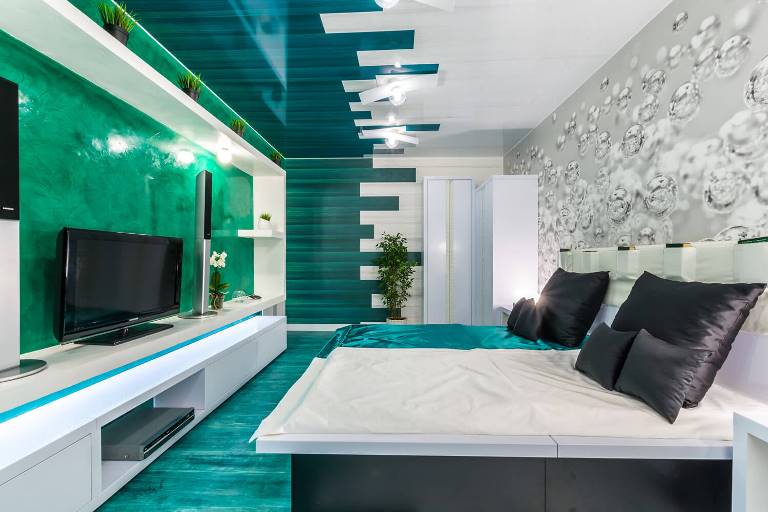
To decorate a house in this style use such materials and ideas:
- The color palette is presented in monochrome combinations. There should be a yellow, red, gray and metallic hue. You can replace unnecessary trinkets with the help of a color game. As a result, the interior comes to life. All this is achieved without the use of unnecessary accessories, which simply occupy free space.
- Decorating the walls is better to make a plain decorative plaster. For their decoration use paintings.
- As floor covering it is customary to use a laminate that has an aesthetic appearance and high strength.

- As for the ceiling, it is plastered or trimmed with wooden panels. In the second case, the built-in backlight is used.
- Particular attention is paid to furniture, as it takes up a lot of space. Furniture, like all elements of the interior, should be functional. Do not use unnecessary decorative elements, which will give the room a kind of clutter.
- As for the material for making this or that piece of furniture, it can be wood, metal, stone and glass. It is unacceptable to use the refined decoration of interior elements in the form of carvings or other. This decoration will attract a lot of attention. And this does not fit into the design style in the interior of Constructivism.
Observing such rules and requirements, it is possible to design an apartment in an original way and give it stylishness.

Art Deco
They can be different and decorate the house in their own way. One such trend is modern. Recently, to decorate the house in a modern style began to use its variation of art deco. In this design, straight and broken lines are combined with smooth curves, and simplicity with original luxury.
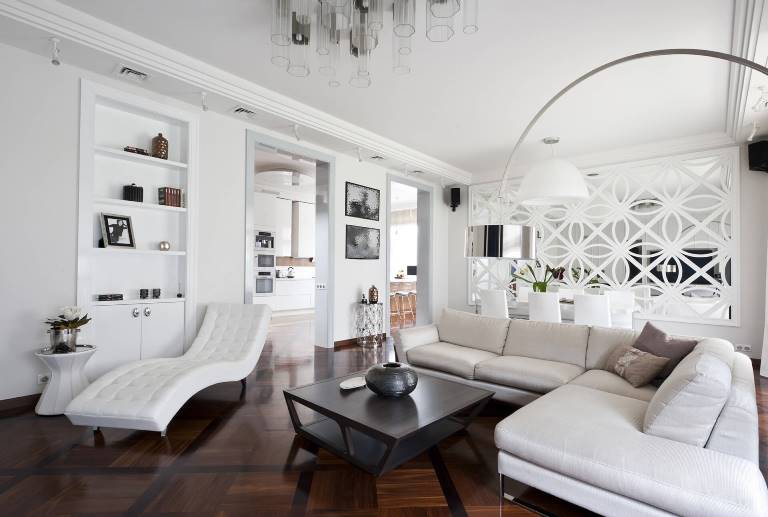
Fans of this style try not to use for decoration of the room common objects that are accessible to every person. The best option here will be the original items and jewelry.
Particularly popular are decor elements made of expensive materials, such as ivory, leather and others. If the interior uses wooden objects and products, they should be made of valuable wood.
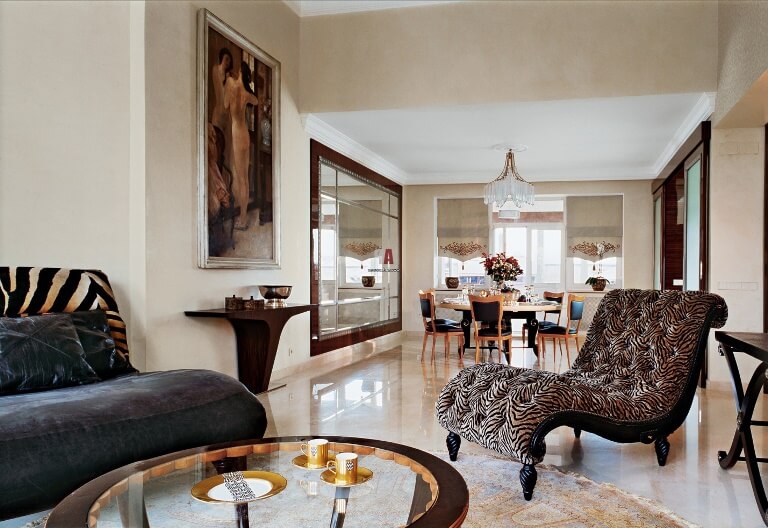
Pop art differs frivolity and the use of bright colors. Unusual lighting and glossy surface, contrast and a large number of bright colors - all this is typical for pop art.
To design rooms use simple and common materials. Even from them you can create original objects and decor elements.

What is the peculiarity of this style of design in the interior:
- The combination of incongruous colors, contrast and bright palette, monochrome design and much more can be found in this style.
- The walls are decorated with portraits of famous stars and posters, comic book characters. Such images and drawings are found not only on walls, but also on pillows and other textiles.
- As for furniture, here the question is solved on the principle of minimalism - fewer objects. In doing so, they must have high functionality. Built-in wardrobes and pull-out beds will allow you to free space and make it more elegant.
- For decoration and decoration materials are mainly used with a glossy surface. Optimum option here will be glass, plastic, silk and other materials. For decorating interior items use shiny rhinestones and threads.
So, for pop art, there is a gloss and original objects made of simple materials.
Minimalism is the ideal solution for modern people
Many homeowners believe that the style of design in the interior minimalism creates a kind of empty room, in which there is only a sofa, a small closet, a bedside table with a TV and a table. But, this is not so. This situation is inherent in a single person.
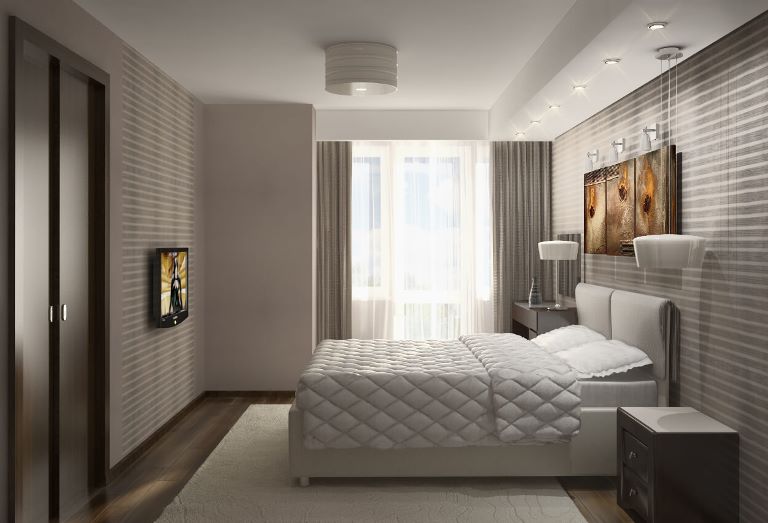
As for the very style of minimalism, it is characterized by such decisions:
- as little as possible of accessories and furniture, which will save space;
- zoning rooms and lighting installed at different heights;
- light shades in decoration, natural colors of wood, metal and stone;
- simple shapes and lines. A minimum of decor;
- the most simple figures, such as a rectangle, circle and others. It is permissible to use soft bends;
- maximum natural lighting. It is achieved with the help of large windows.
All elements should be combined as organically as possible. In doing so, they must perform a specific task. Senseless details are not needed here, even if they have a beautiful appearance.

Kitsch
Kitsch is the original design direction in the interior. Its feature is the combination of different solutions. As a result of this combination, a tasteless composition is obtained. Knowingly, kitsch translates as "bad taste".
Of course, the combination of different objects and the game of color makes the design original. Experts believe that living in a room decorated in kitsch, only a person with a stable psyche can.

To understand how original this style is, you need to see the photo of the interiors that can be found on the Internet. This style is optimal for creative and active people who are not afraid of experiments.
In the interior are used original crafts made of natural material. Of course, with the help of such elements it is impossible to create an exquisite and noble atmosphere. Therefore, lovers of beauty, this option will not be the best choice.

Neoclassicism is the best solution for country houses. It is not customary to use modern materials, which gives an opportunity to all those who wish to take advantage of this option of decorating the house. Neoclassicism is characterized by pastel colors, simplicity, symmetrical and harmonious combinations.
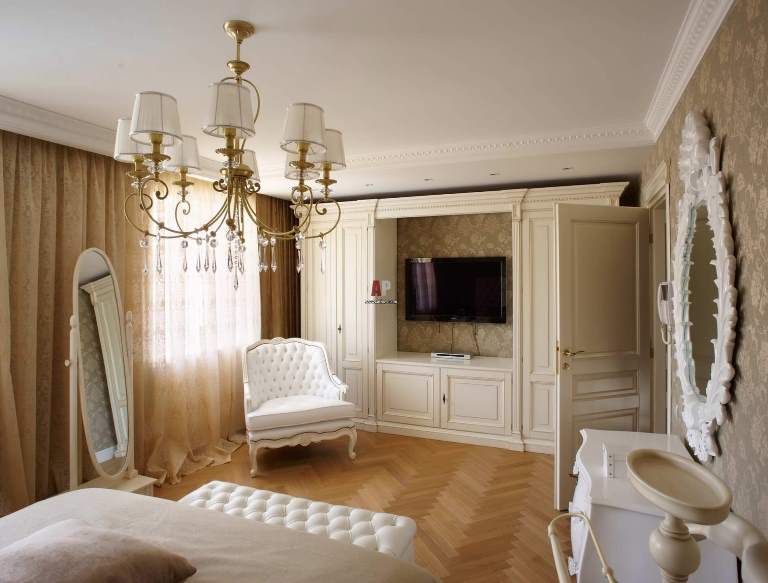
The optimal solution here is:
- walls in pastel colors;
- white and dazzling furniture;
- natural floor covering;
- the presence of decorative elements in sufficient quantity.
With these solutions, you can create a sense of freedom and ease. The peculiarity of white furniture is that it can be used in large quantities. Of course, you need to install additional elements of the interior only if there is a great need.
The design should be delicate and elegant. So, for example, take an ordinary dressing table. A graceful mirror on it and a fabric cover on a chair will give furniture shine and refinement.
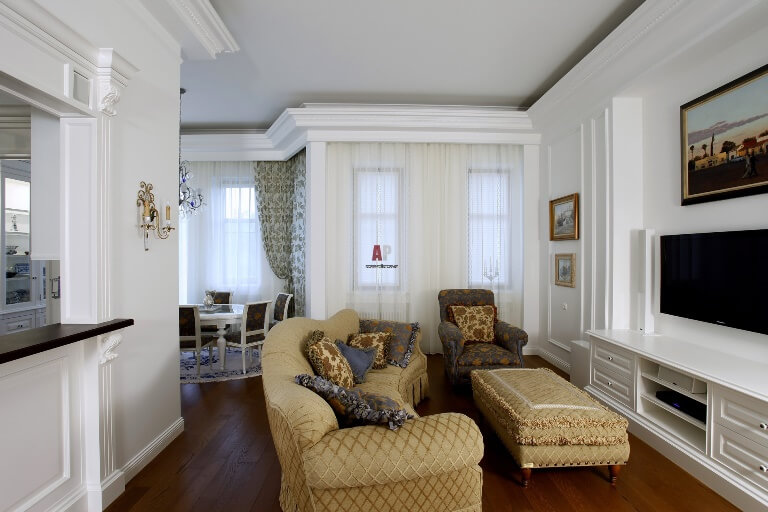
We decorate the room in high-tech style
When it comes to modern design styles in the interior, then do not forget about such a direction as high-tech. In this style, at the same time, progress, minimalism and originality are combined. An open space is created in the room, in which only functional elements that are subject to strict geometry are installed.
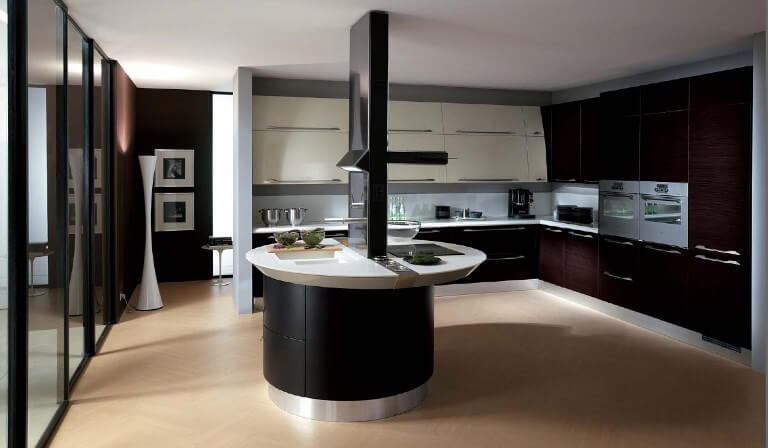
To original decorate the room in this style, you need to consider some rules:
- wide use of chrome and metal elements;
- straight lines in the decor;
- modified furniture (rotating seats, curved elements);
- the color solution is presented in white and black. Also, different shades of gray are often used;
- interior items should be made of metal or glass. The use of a tree is inadmissible.
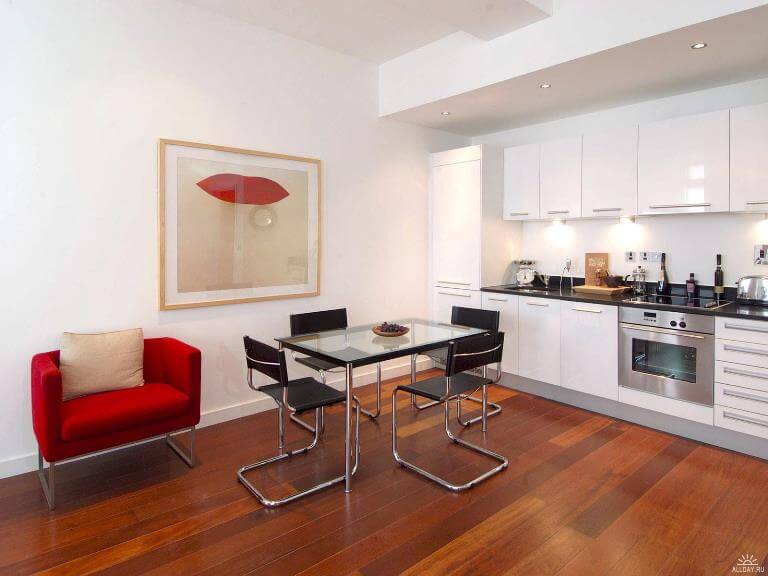
For the decoration of walls use light colors. In order not to litter the interior, the walls are not decorated with anything. Flooring carpet or linoleum. All textiles in the interior should be monophonic.
Particular attention is paid to the design of the kitchen. It should shine. This effect can be achieved with the help of metal objects and the glass facade of the kitchen set.
Style hi-tech is used to decorate both urban apartments and country houses. The main thing is to follow the advice of professionals.
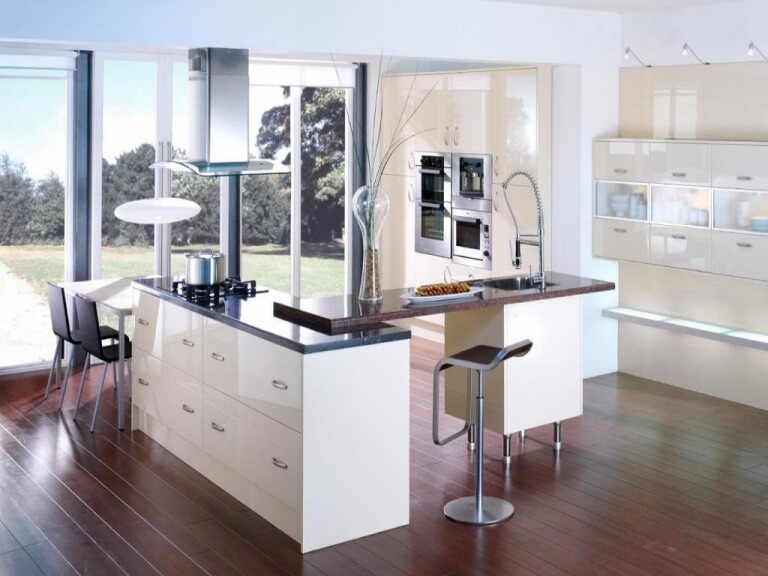
A lot of known lofts
This style came to us from America. Outwardly, the situation resembles warehouse and factory premises. Over time, this style was decided to use for decorating living quarters. The loft is characterized by cool shades.
To create a contrast, one wall in the room is trimmed with a different color. So, for example, three walls are brick, and the fourth is covered with plaster. This contrast allows you to zonate the room.

At the design of the room use a minimum of furniture. There is almost no decorative element. The peculiarity of the interior lies in the large windows that maximally illuminate the room.
Brick walls and a minimal set of furniture allows the original design of the room in this style.

Techno style: in step with the times
Techno style is not all appreciated, considering it to be cold and uncomfortable. This is due to the fact that the interior design uses elements of glass and metal. The tree is replaced with plastic. This style is ideal for those who are tired of classical motifs.
When decorating a room in a techno style, several rules should be followed:
- a lot of free space;
- minimum of light;
- a sufficient number of decorative elements.
This style in the decor of the interior will create a strict and comfortable environment.
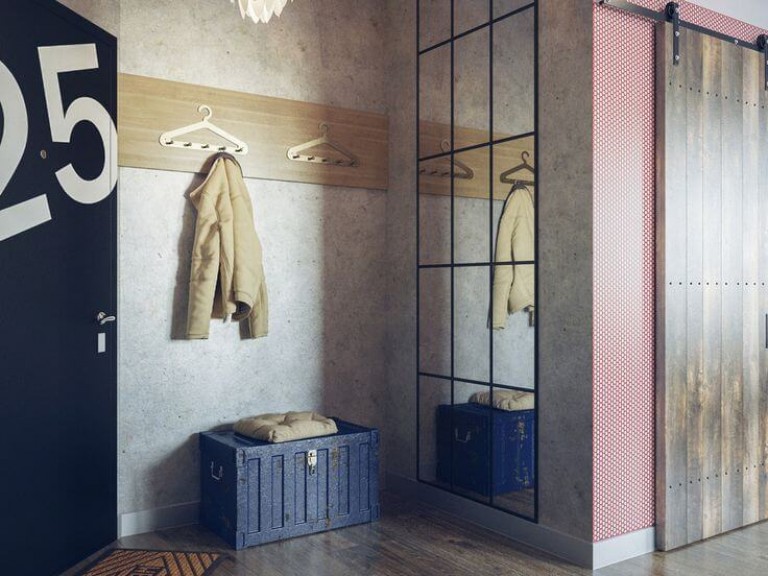
In the modern lexicon there are many words, the meaning of which we do not know thoroughly. For example, some people can not exactly answer the question about what design is, what the true meaning of a given word is, where it came from. We will try to raise the veil of such secrets on the basis of theory and practical examples.
Some general concepts
Generally speaking, design is a synthesis of the design process and its result. In the course of this, objects are created for everyday use, premises, cars and equipment, as well as many other things.
According to the rules, the design must contain three main criteria: economy, convenience and beauty. Although the percentage of these indicators may vary depending on the industry in which the work is carried out. However, we can not say so briefly and dryly what design is. This concept is divided into many subgroups, varieties that are fundamentally different from each other. But one thing unites them - to create something beautiful, comfortable and economical, a specially trained person should be engaged.
Consider who a designer is
Since in our days this direction is often compared with architecture, music, sculpture, the creator himself in this area is also considered an artist. He creates something beautiful, universal, something that will simultaneously please the eye and, perhaps, will become acceptable in use.
Who is a designer? You can not miss that moment, you must clearly see the overall organization of all the details and forms in the things with which it works. This means that when creating something new, it must move all the components of the object with which it operates, until they look the most harmoniously and attractively in the given conditions. This also applies to working with color, and with lines, and with shapes. If a person feels a balance in things, while seeing a general picture of what happens, then he is a true designer. Such a specialist can safely seek himself in one of the branches of this art form. 
Let's talk about design from a professional point of view
Now let's try to consider this art form from the practical side, which will help to look at it in a new way and understand its essence. Modern information sources give too much unnecessary information about what design is, but there is no precise concept, in fact.
So, if we need to solve a problem, we create something new, something that allows us to eliminate shortcomings quickly and in the most accessible way possible. For example, to overcome the distance between two floors, the height of the walls of which is very high, it is erected Simultaneously it is smoother for a climbing person than a straight line, and takes up less space. Thus, design is a solution to the problem both from a practical point of view (more comfortable conditions, more free space), and with aesthetic (we all know that spiral staircases look very impressive and perfectly complement any interior). 
The desire to become better
Continuing to talk about what is design, pay attention to the furniture that is in our apartments, houses and offices. Few people think that it was once made to make our life better, more comfortable and more beautiful. So far, we are not talking about what kinds of furniture elements can be bought today, but we will consider directly those items on which we sit.
Once upon a time, people used only stools and benches. But there was a man who wanted to have a more comfortable place to relax, and he created a soft chair, upholstered in matter. He had to develop in the first place a design that could withstand a person with any body weight, and after giving it a definite Now it becomes easier to understand who a designer is. This is a person who simultaneously constructs and ennobles his creations, which later become useful and even irreplaceable for society. 
What is the design like?
Nowadays, there are a lot of different kinds of activities that all combine under one tag - design. This applies to the Internet, household items, food, toys and interior, cars and portable equipment. Everything that surrounds us was once, as they say, a dream that came true because of the combination of constructive activity and decorative. So now let's try to divide all the styles and directions in design into the main subgroups that are most popular nowadays. By the way, many of them have already become separate branches of art, which are taught not only in specialized courses, but also in universities of the international standard. 
Our house, dacha, office and the process of their creation
Perhaps, with the word "design" in most people, the first thing is associated with a certain type of interior. Today, the design options for the premises are divided into many varieties that can be classified according to the era, the country or simply the creator's fantasy. For example, in offices, classic style, which, accordingly, originates from the era of classicism (the nineteenth century).
Modern design is created in apartments, and it can resemble a nightclub and so on. Typically, this option is characterized by a minimum amount of furniture, glass shelves and tables, a large number of mirrors and a monochrome color gamut. But any room (both business and home) can be executed, say, in Japanese style or in French. In the first case, it is enough to establish a minimum of functional furniture in the room and add the appropriate attributes. In the second we select jardiniere, couches and refined forged elements, after which your idea comes to life. 
Internet - a field for flying fantasy
Today, design trends are very closely related to life in the worldwide network. The number of sites that fill the Internet, it is unrealistic to count, and each of them has its own specificity. Some are created for communication, others - for obtaining basic or additional earnings, there are children's portals, and there are absolutely adults (18+). There are shops, social services, various auxiliary services and many others in the network. We see that you can simply live on the Internet, therefore every branch of virtual being must have its own external appearance.
The design of the site is created by taking into account what its main functions are. Depending on this, the color design, various decorative details and inserts, widgets, functionality, etc. are selected. It is also worth noting that the appearance and design of the site for the entire period of its existence can change many times. Everything depends on the speed of development of new IT technologies, services that make the use of the resource more comfortable and acceptable. 
Food also has an appearance
It's hard to imagine, but in the food industry, designers also work. They create a beautiful shell of everything that we eat, from the wrapper to the appearance of the product itself.
As an example, take the design of chocolate candy. If this product is intended for children, it will most likely be rectangular or elliptical. The wrapper will be painted in bright colors, there will be drawings and colorful inscriptions on it. Thus, with the help of design this product will attract the attention of children, which will allow the manufacturer to increase the number of sales.
Candies for adults are most often packed in cardboard boxes. They can have a round, rectangular, square shape or even the outlines of the heart. The packaging design is most likely to be romantic, executed in dark colors. Similarly, the design of dishes that are served on the table without packaging is created. Even meat can be cooked in a certain way so that it has the shape and shade you need.
Design on a larger scale
Have you ever thought about the fact that not only our house has its own, different from other appearance, but also the city? In fact, every settlement has its own unique design, which in most cases was created over many centuries. This is what we often call the aura of a place, its secret meaning. It is interesting that the appearance of the city greatly affects the residents who live there. The impact is provided by architectural forms (smooth or pointed), the width of the streets, the height of buildings, their color, the shape of windows and doors, and much, much more.
Perhaps a small province or village will not have integrity in this regard, but let's take a look at such megacities as Moscow, Chicago, Mexico. In each of them there are ancient buildings, skyscrapers, wide avenues, and narrow streets. However, they are fundamentally different because they have a different design that has been created for centuries.
A small conclusion
Today, it is enough to pass design courses in order to become a worthy representative of this profession. However, it is important to consider one fact: to create something new, helping to solve certain problems and while looking beautiful, you need to have the talent. Designers are undoubtedly creative people who see this world differently than technologists or ordinary workers. Nevertheless, the design itself is not art, some kind of decorating or something like that. This is a combination of innovative findings that make our life easier and more comfortable, and beauty, which brings to each day a more good mood and positive.
Just planning a repair or finishing, you need to think about what will be the style of the interior. In accordance with it, it will be necessary to select the methods of decoration, materials and colors.
Current trends in recent years
To say that historical styles in the design of premises are now unpopular can not. But gradually the accents are shifting. After a busy working rhythm at home, I want space, simplicity, convenience. And numerous, albeit chic, elements of the decor weary. They, of course, create an atmosphere of coziness, but very much stuffy. Therefore, gradually Baroque, Rococo and other chic styles give way to minimalism, high-tech and others - modern, more functional and easy.
Modern style in the interior
Like most current trends, the modern style of decorating rooms requires a minimum of furniture and accessories. The main task is to create an interior with a feeling of unloaded space, light and unobtrusive. Hence the choice of subjects: they are functional, the lines are laconic. This style is for those who are tired of the variety of complex shapes.
Modern interior style - for those who are tired of complex shapes
The characteristic color scale is neutral tones. These are shades of gray, beige, white and light brown. All the decoration of walls, floors - only a background for furniture and accessories. Hence the methods of finishing. The walls can be plastered or wallpapered with wallpaper, but their surface is smooth, without pronounced texture. When decorating rooms in a modern style on the walls, there should not be any pronounced textures or even barely noticeable drawings. It can resemble silk, velor, just plain matte. Ideally smooth surface without flaws.
Colors are soft, Walls are smooth. Absence of unnecessary details is a key moment
The floor is usually laid laminate and, as a rule, light colors. They put more parquet, but the boards are laid flat, without patterns. It is acceptable to use a short-pile carpet. Another version of the flooring is - and again - a one-piece matte, soft colors.
If you leave the interior in this form, it will be too calm and inexpressive. Enliven its accessories and decor. They are very few, choose them carefully, often the decor is functional things: shelves, shelves, furniture of an interesting shape. Colors - saturated, simple forms, no patterns or floral, plant motifs. Interesting in this background are living plants. Their green brightly stands out, introducing the necessary color accent.
Furniture and textiles for it - basic accessories
Ceilings in modern design are no less noticeable part of the interior than, say, the walls. They can be with any number of levels, made of plasterboard, plastered or combined with tension. In this style there is usually a chandelier, but it has an unusual shape, suitable for style - from glass or with a metallized surface. Plafonds - strict forms without embellishments and curls.
Furniture for the interior in a modern style has the right proportions, smooth or smooth, slightly rounded, lines. It is practical and comfortable. Upholstery is monophonic with a smooth color. It can be fabric, leather - natural or artificial. In the choice of textiles for furniture, you can add a few bright accents, breaking the monotony of the design.
Ceiling and lighting - two ways to revive the picture Curved lines, but not curls - it's allowed Textiles, furniture, lighting - an interesting effect Characteristic colors for modern style - white, beige and their combinations and shades
For windows, the textiles are also chosen for the most part evenly painted. There may be geometric patterns, alternating matte and shiny threads, but without plant motifs. For a modern interior, classic curtains on the eyelets are suitable. They create the measured, adjusted folds, which perfectly fit into the style. Also good Japanese, Roman, can be used roller shutters.
Modern style, by the way, easily transformed into close in spirit. It serves as a mainstream for other directions in the same vein. Monotony will get you tired, you will want something more insolent ... some pictures on the walls, some bright accessories, change the upholstery to black and white type "zebra skins" or just striped. It turned out the style of art deco.

If you add metal to the interior - fixtures with open fittings, furnish the furniture with shiny inserts, put it on stand types like tripods, vases in the form of tall and narrow flasks, add a city landscape to the wall - you will get a techno style.

High tech
This style of interior, which arose closer to the end of the 20th century. It reflects the penetration of high technology into our daily lives. Admire him with strict swift lines, smooth surfaces without drawings, simple shapes. The most characteristic features of the high-tech style are a combination of metal and glass in many interior items and the presence of "production" motives.

For implementation, large spaces and partitions are not required. Rather, they are organized by folding, sliding structures that only zonate space without dividing it into separate rooms. Very characteristic glass partitions in a frame of shiny metal - aluminum or chromium-plated steel. The same motifs in furniture: legs of a shiny pipe.
The walls are monochrome, smoothly painted, without textures and ornaments. So even here in the decoration - mostly plaster, if the wallpaper, it is absolutely smooth. The color range of the background - walls, ceiling and floor - does not differ in variety: white, light gray, beige.

Walls, floor, ceiling - bright
But the furniture can be painted in bright colors. It is the cente of composition. At the same time, the furniture lines are simple, the upholstery is monophonic. But this does not mean that there are no unusual forms. On the contrary, furniture for interior in the style of high-tech can be very unusual forms - futuristic, technocratic.

Bright colors - like accents and unusual forms of furniture - characteristic features of high-tech in the interior
Accessories or not, or they are strict and concise. Lighting - bright and zoned. The chandelier in the center is absent in principle, and the illumination "gets" a large number of lamps on the walls, ceiling, characteristic table or floor lamps.
Ideal - glossy or semi-glossy stretch ceiling. It reflects the glare of light, which brightens the monotony of the situation. The same glare is played on the glass and shiny metal surfaces.

As you can see, in its pure form the style is rather cold. Not everyone likes it, although it can be softened with a monophonic furry carpet and suitable textiles. But all the same, it turns out more "production" environment than the home. Therefore, there are softer interiors from the "domesticated" high-tech. They contain its elements, but in combination with softer and different colors, wooden furniture and the same warm tones in textiles. Some of them are presented in the photo gallery.
Interior in the style of high-tech can be a little "softer" due to the wooden furniture Soft solid carpet on the floor, wooden furniture, but strict forms - a softer option. Kitchen in the style of high-tech - one of the most interesting areas Interesting find - a glass partition
Minimalism
The style of the interior "minimalism" is also "native" from the end of the last century. Its characteristic feature is the absence of any unnecessary details. Only necessary. The main color - walls and ceiling - white, accentuated by contrast black, brown or dark gray. There are other colors, but these are no longer characteristic features, but variations. From the hi-tech described above, it is distinguished by the use of wood and wood products, although wood is not an obligatory attribute. Simply against the background of light walls, it stands out particularly clearly, undoubtedly, drawing attention.

Basic rules: large spaces, conditionally zoned lighting, are lightly marked with partitions. Large windows, a lot of light, but it's not sharp and bright, like in high-tech, but softer and diffused. To create this effect, matte surfaces are used. They do not reflect light, but scatter it.

The main feature of minimalism is only necessary things
Zoning predominates in lighting. Chandeliers usually do not, there are a large number of lamps of simple shapes. That's it, that's all. Furniture - simple, monophonic, lack of ornaments and pretentious elements. Space, abundance of air, unloaded interior. This is minimalism.
 The abundance of light, only the necessary items of simple shapes - the main signs of minimalism in the interior The bedroom in the style of minimalism - all that is superfluous hidden in the storage system Color accent - sofa. The forms are simple, the lines are clear and swift. Gray, white, brown - the most frequently used colors. Premises are zoned conditionally - a ceiling, a stand, barely marked partitions
The abundance of light, only the necessary items of simple shapes - the main signs of minimalism in the interior The bedroom in the style of minimalism - all that is superfluous hidden in the storage system Color accent - sofa. The forms are simple, the lines are clear and swift. Gray, white, brown - the most frequently used colors. Premises are zoned conditionally - a ceiling, a stand, barely marked partitions 
Ethnic styles
Although ultra-modern styles and trends in interior design are good, but not for everyone. Too cold and refined. There are always romantic natures for whom such utilitarianism and rationality are unacceptable. They prefer a more comfortable environment. This opportunity is provided by styles of ethnic orientation. They are good for their versatility, which allows you to choose a style to your own taste.
Provence in interior design
The style is named for one of the southern provinces of France and refers to the direction of "country." Provence is an agricultural area famous for its vast fields of lavender. And interiors in the style of Provence - rural, pastoral, simple, with wooden elements - painted or artificially aged.

One of the "urban" options for provence
The main colors are white, perhaps with a gray or beige tinge. In the design - soft pastel shades, as if pouring out under the bright sun. Gentle blue, slightly lilac, pale pink, light green, yellow. As a color accent - lavender and the color of the southern hot sky - bright blue, you can find warm inclusions of ocher.
![]()
Blue and lavender - the color accents of Provence
If you need a Provence style room, the wallpaper is not for you. The walls are plastered, and the plaster is rough, with a pronounced texture. The wooden walls fit well. Can be whitened, dyed or in natural color. But the coating without gloss is matte, and better - an aged surface with a well-visible texture.

Carefully made "nonideal" in appearance of the walls and a characteristic color scale
It looks great brick wall, just whitened or in natural color, without plaster. In general - rural, light and, slightly, dacha style. Excellent for wooden houses, but in a refined form is also good in apartments.

Brick or stone wall - one of the signs of provence
Furniture - simple wooden or painted. Tables, chairs, chest of drawers - made of wood. There are forged items - on the walls of the flower shelf, legs for the table. Upholstery of sofas and armchairs - or monophonic, similar to linen, or with floral motifs. A lot of textiles - pillows, homespun blankets or rugs. With all this, do not forget that this is - even rural, but France. The items are simple, but not rough, some even with a certain amount of elegance.

Kitchen in the style of Provence - a separate topic, but all the rules and colors remain and here
The ceiling is wooden or even white. A characteristic feature is the beams below the ceiling. Unfortunately in the interiors of the Provence style, the lighting of the ceilings, so beloved by many, is practically not used - it does not fit into the concept. But the forged chandelier, which can be lowered from the beams on the chain, is perfect.

Forged chandelier - why not ....
Separately it is necessary to talk about windows. They, of course, large from floor to ceiling: the south, the heat, you need to air. Curtains - light, classic models - white curtains and plain or colored light curtains. Colors - soft, pastel.

Windows - large, with light curtains
On the whole, there is no diversity. On a white or other light background, brown wood tones and some other one, maximum and occasionally - the second color.
Floral large pattern - blue on white - typical Non-bright colors - cozy bedroom in the style of Provence To get such an "unfinished" surface you need a careful treatment Gently olive walls, gray, brown - another facet of the provence
Another interesting style for creative personalities - loft - is described.
Scandinavian style of interior - naturalness and abundance of light
If you like simple interiors, but modern currents are too cold, your choice is Scandinavian style. With a common similarity, it is more "homey" and warmer. Used a wider range of colors - all natural shades, no "acid" or exaggerated. Walls - white or milky-white, creamy shades can be used. The remaining colors from the "natural" palette are brown, buffy, green, blue - the colors of the sky or sea waves.

Light walls, natural colors in the interior - these are the characteristic features of the Scandinavian style in the interior
A harsh climate has taught me to love the sense of warmth that wood gives. It is on the floor, furniture made of it, walls are trimmed. The most common breeds are pine and birch. Their wood has a light color, well-defined texture, which on a light background attracts attention.

On the floor is usually a board or laminate. There is no excessiveness, the situation is laconic and simple. The ceilings are ordinary, plastered white or wooden, natural or whitened. Stretched multi-level systems and complex backlighting are uncharacteristic for Scandinavians. In general, they are parochial and pretentiousness. Simple, comfortable, high-quality things are yes, but complex embellishment is not. All this is reflected in the style of the interior.
Even the old carpet - cozy and warm - found a place in the Scandinavian style - lack of splendor - the main feature Warm plaids and pillows - one of the attributes of style
Modern styles stake on the functionality of objects and the conciseness of forms - the seeming simplicity of the interior is designed to shade non-standard color and light solutions. If you are not attracted by the warmth and comfort of the classics, and the heavy curtains make you sad, modern styles will provide a suitable design for your home.
Grunge
The imitation of the classics in this style knows the boundaries of what is permitted - not a rethinking, but simplification is due to the use of accessible expressive means. Grange bribes his aesthetic consistency and restraint in the choice of interior items. Deprived of vignettes, carvings and complex decor furniture still has an easy imprint of time, thus creating the impression of a family home - it emphasizes engraving in decoration, floor lamps and family portraits. Despite the fact that grunge is a country-related style, there is no hint of rural negligence in it.
Country
Recognition of country style occurred more than 40 years ago - at that time under this sonorous name understood the design of the premises in the spirit of the American ranch. Now the "village style" has special features in each region, but, nevertheless, it has not lost its dominant motive.
Country became more refined, but retained its former closeness to nature. The desire for simplicity is expressed in unpainted furniture from rough wood, wicker items of interior, ceramic dishes, textile elements of linen and chintz. For the country is characterized by saturated colors - but not bright, but slightly muffled.

Kitsch
Kitsch can be defined as a protest and mockery of academic styles in design. He is called to ridicule and provoke bad taste, as well as a combination of the incongruous. Sometimes this direction generates a serious desire to make "expensive and rich", but for a small budget. Kitsch achieves the set goals by using absolutely all possible pseudoblastic objects: from drapery from plush to window sills "under marble". Extravagant to the extreme, kitsch is able to vulgarize any historical or ethnic style.
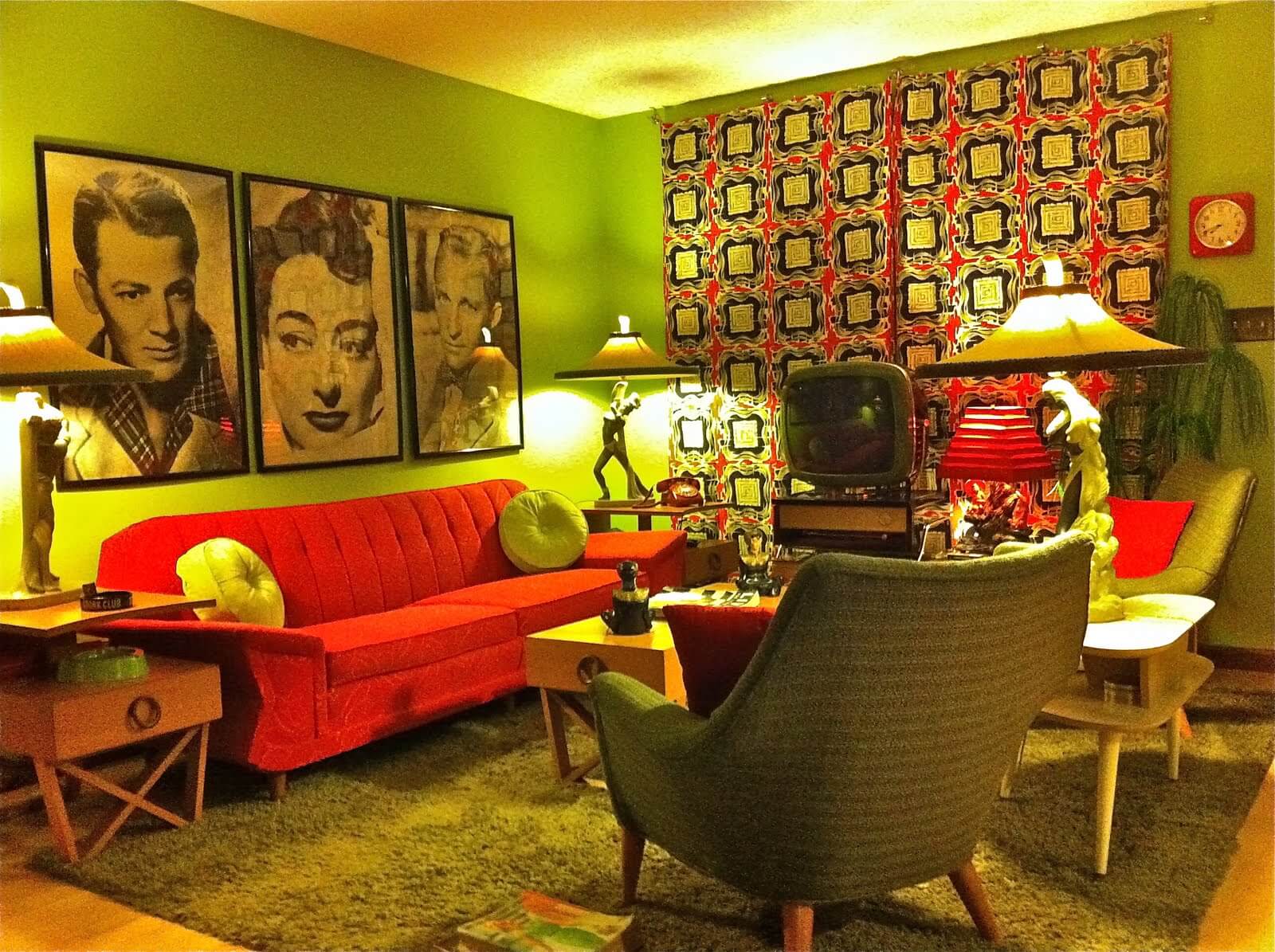
Contemporary
Style Contemporary does not have any special differences, but meets modern requirements of functionality and comfort. Clear to everyone, it became a mass direction due to the simplicity of the performance. Contemporary is an adherent of mobile designs and democratic furniture. Interior items in the style of contemporary look impersonal, do not betray either their value or "age."
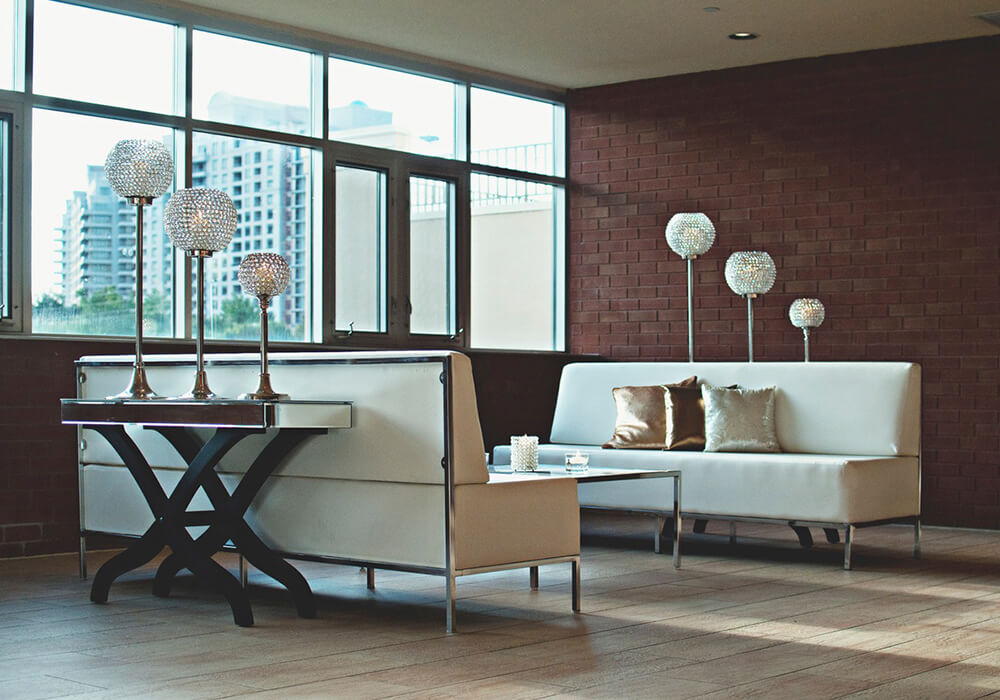
Loft
The loft will not provide comfort to your home, but all its typical features will convey the desire for freedom. The appearance of this style in America is due to the low cost of renting abandoned industrial premises, which were readily populated by representatives of bohemia in the 40s. Huge open spaces with high ceilings and wide windows over time became very popular and even got the status of elite housing.
If you want to stylize your interior under the loft, next to bricklaying, concrete floors and exposed beams need to "settle" modern equipment, sofas huge sizes, glass partitions and ethnic items. Graffiti, road signs and advertising posters will be appropriate as decorative elements. The kitchen and the bathroom should be tiled with mosaic tiles or stainless steel panels.
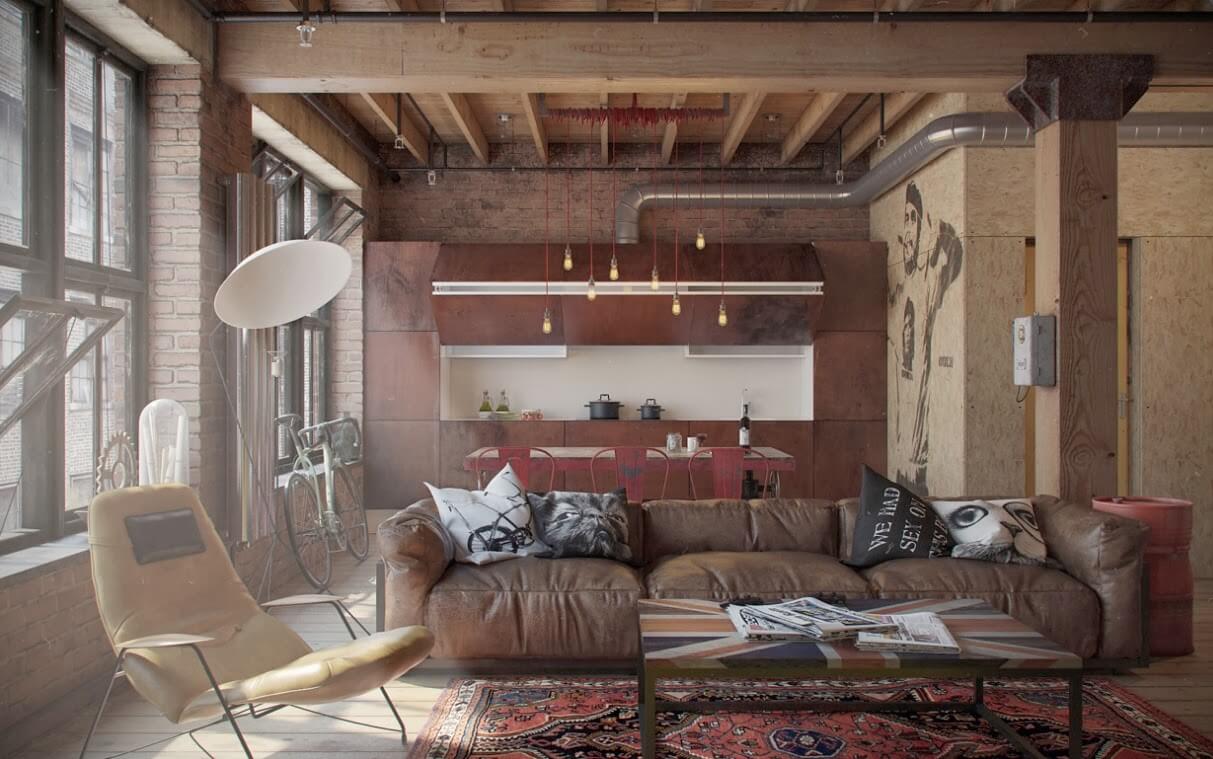
Minimalism
Minimalism - laconic, but one of the most striking direction in modern interior design. Simplicity is expressed in the modeling of space by a few most necessary items and literally two or three shades. Therefore, accents are placed in the interior with the help of texture and geometric forms of furniture. The predominant materials are steel, ceramics, glass, stone, plastic and wood. Large windows and a minimal amount of things create the illusion of an unlimited space.

Pop Art
Pop art makes design easier, and ordinary household items equate to art. Iridescent, contrasting, expressive, he can create a storm of positive emotions with his own color, though not all of them. Pop art serves the consumer society - it produces that interior and those items that the consumer desires, but does not need.
Pop design can be called cheap - not from the point of view of aesthetics, but from the perspective of production costs. Style brings to the masses a culture of fragility: today I bought it, tomorrow I threw it away. Among the pieces of furniture you just can not find the closet - after all, it takes up a lot of space, and pop art aims to save a maximum of free space. Instead of a massive box, storage and niche systems will be appropriate. The direction does not limit itself in decor elements: a lot of repetitive posters and paintings on the walls do not deprive the interior of a sense of comfort. Pop art is meant to shock, and this task copes with its task excellently.
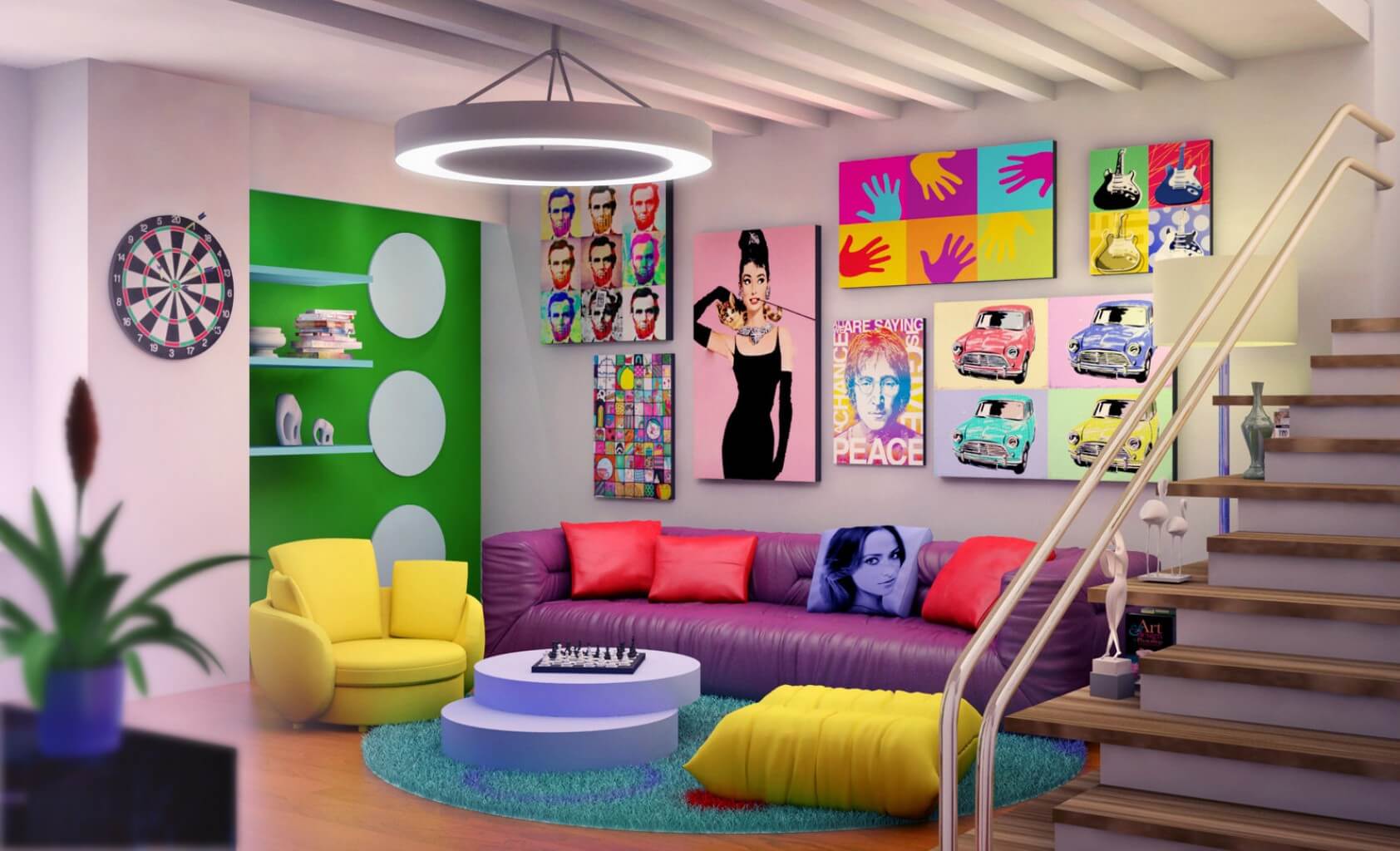
Postmodernism
Citing historical styles is the very essence of postmodernism. In this case, the direction tries to ironise and mix the old elements with new ones. Screaming colors do not make you tired, postmodernism brings uncertainty to the clarity of the modern interior. Style refuses stereotypes, monochrome and rational forms - it combines and uses objects as it sees fit.

Fusion
Fusion is able to combine what other styles can not do - but do not confuse it with eclecticism, which confuses only close in spirit directions. Fusion exists on the principle of freedom of material, form and color. The hooligan style is not so limited in the choice of expressive means that the only deterrent is the taste of the designer. Actually, the sense of the measure of the author of the interior (and a lot of draperies, of course) and should provide a harmonious appearance to the space.

Techno
Techno creates a cold atmosphere in the house with clear geometric lines, as well as characteristic materials - metal, glass and stone. The interior is more like a garage than a dwelling, and furniture looks like equipment. Style exploits to the maximum the magic of lighting - fills the space with mysterious highlights, reflecting light from glass and metal.
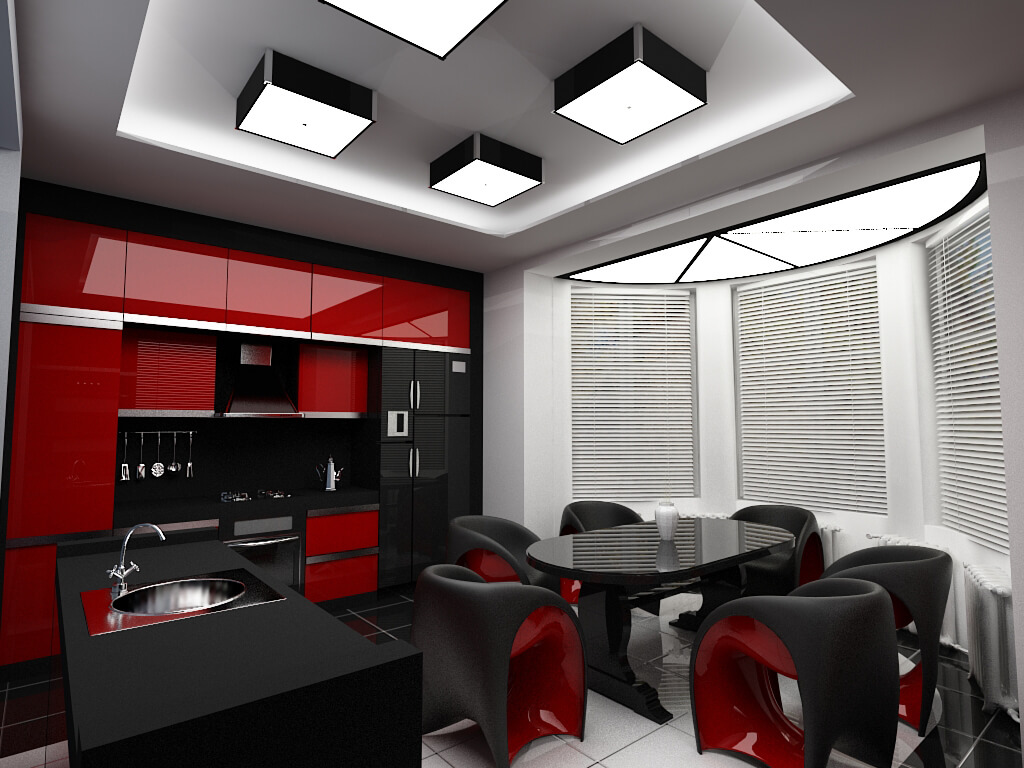
High tech
The style of high technology does not recognize wood and sophisticated finish - hi-tech promotes the strictness of glass and metal. He uses simple shapes, straight lines, silver-metallic color and decentralized lighting. Furniture, though designed to be as functional as possible, has a very bizarre shape. The windows are decorated with vertical or horizontal blinds. Monochrome light walls echo the idea of minimalism.

Chebby Chic
The aesthetics of the shebbi-chic allow in the interior only old or new, but artificially aged items. Antiquarian things, furniture and decor elements found in flea markets, create exactly the effect of shabby, which is necessary style. The color range is limited to pastel shades, such as pale pink, light blue and ivory. The proximity to the rococo style is expressed in love for pastoral motives, roses and angels.
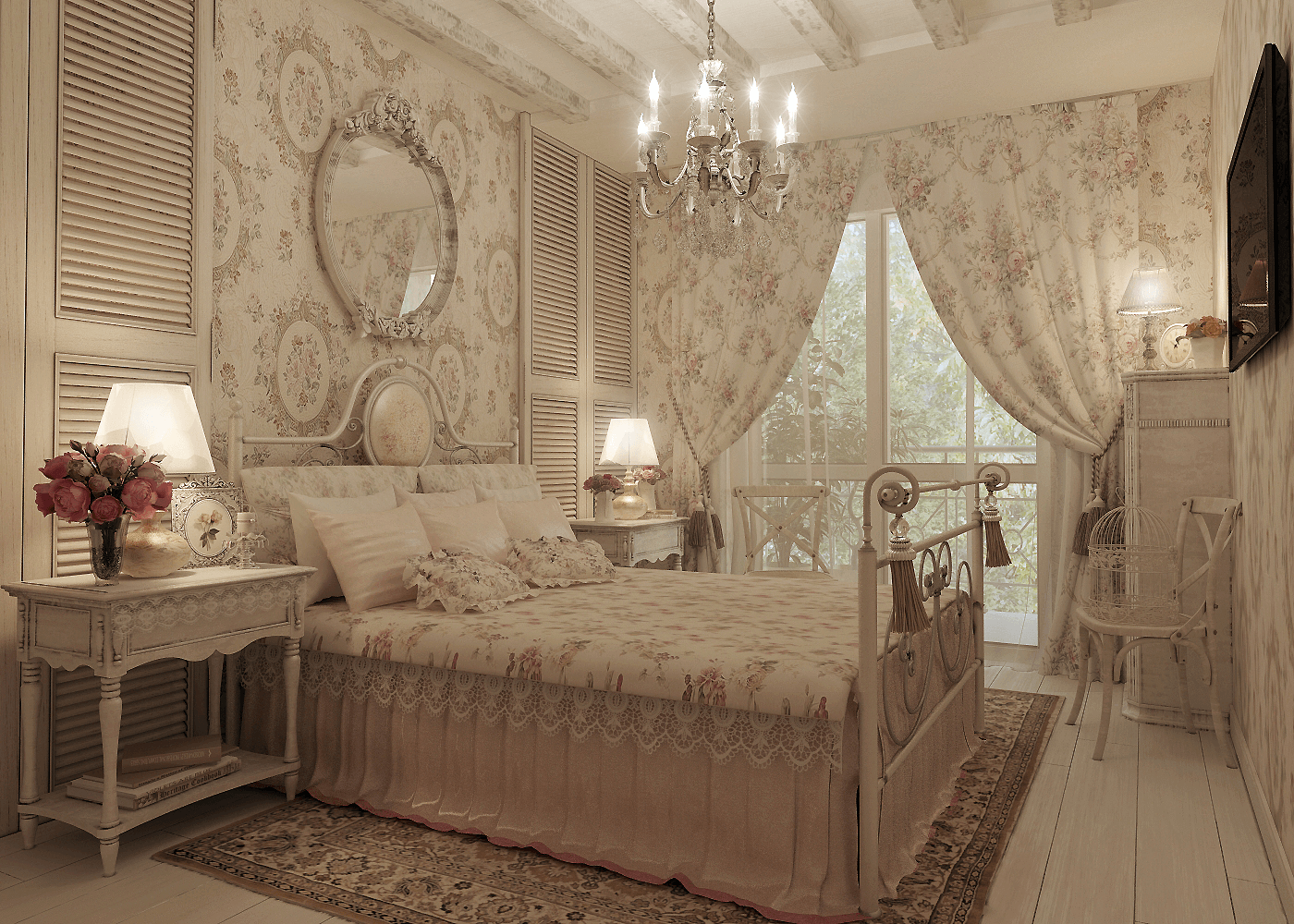
Etchikal
Etchikol provides the interior with the unity with nature itself. Environmental problems have led to the fact that people are striving to create a corner of the pure world in their home. This desire and dictated the main features of the direction: the use of natural materials, natural forms and natural colors - the color of grass, water, stone, etc. Etchikol promotes relaxation and the right way of life.
